Earth is home to many unique creatures. From elephants to blobfish, they all have their roles to play. But, for hammerhead sharks, some of the most enigmatic fish in the ocean, the biggest question just might be: what eats hammerhead sharks? We all know that sharks are carnivorous predators who rely on hunting sea creatures to survive, but do they have any natural predators? The answer just might surprise you; it’s closer to home than you might think.
Here, we’ll learn about hammerhead sharks, where they live, and what they look like. Then, we’ll take a look at the five creatures most famous for eating hammerhead sharks. For each, we’ll discover a little more about them before arriving at the surprising top spot on our list. Finally, we’ll take a deeper dive into shark ecology and find out why hammerhead sharks are in danger of disappearing from our oceans and why that’s a big deal.
Keep reading to find out what eats hammerhead sharks!
Getting to Know Hammerhead Sharks
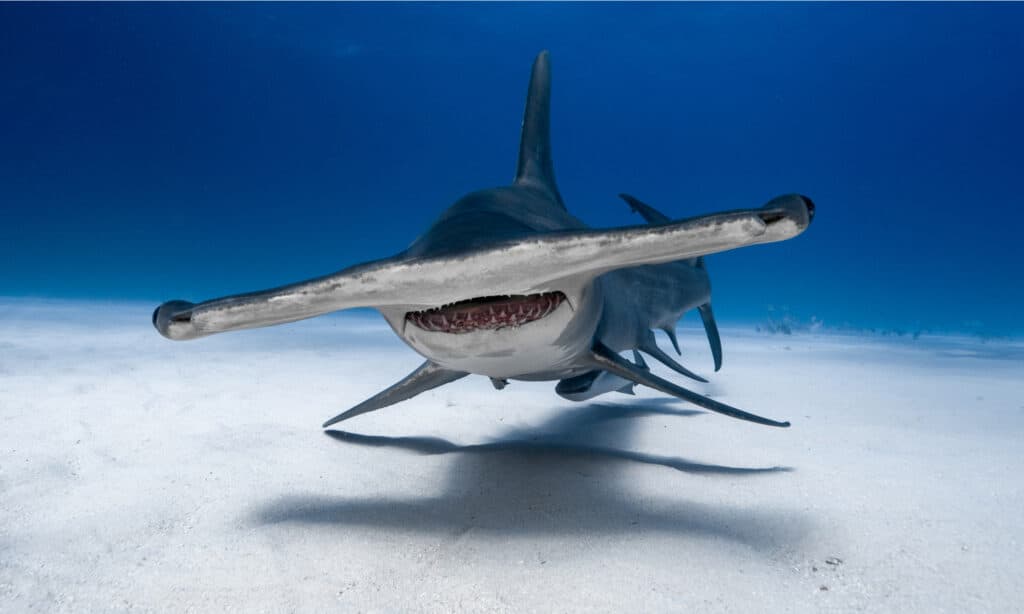
There are nine species of the hammerhead shark.
©Sail Far Dive Deep/Shutterstock.com
Hammerhead sharks are among the strangest-looking animals on the planet. Their eyes are located on each end of their hammer-shaped head, giving them a 360-degree field of vision. But, the hammer does more than give them excellent sight; it also means that they’re incredibly sensitive to even the smallest stimulus. A hammerhead shark can sense a fish moving even when it’s buried in the sand.
These incredible sharks are fearsome, but they’ve never been implicated in a single human fatality. That’s not to say that they won’t bite if threatened or provoked. Hammerhead sharks are still wild animals with sharp teeth and predatory natures. They should be treated with respect and caution when encountered. Adult hammerheads have no natural predators, except for number one on our list.
Where Do Hammerhead Sharks Live?
Creatures that eat hammerhead sharks have to go into shallow, coastal waters to find their hammer-headed prey. Hammerheads aren’t deep ocean sharks. Instead, they occupy the warm, shallow waters off the coasts of Australia, Asia, Africa, South America, Central America, and the southern parts of North America. They also live near islands like Hawaii and New Zealand.
What Eats Hammerheads?
5. Hammerheads
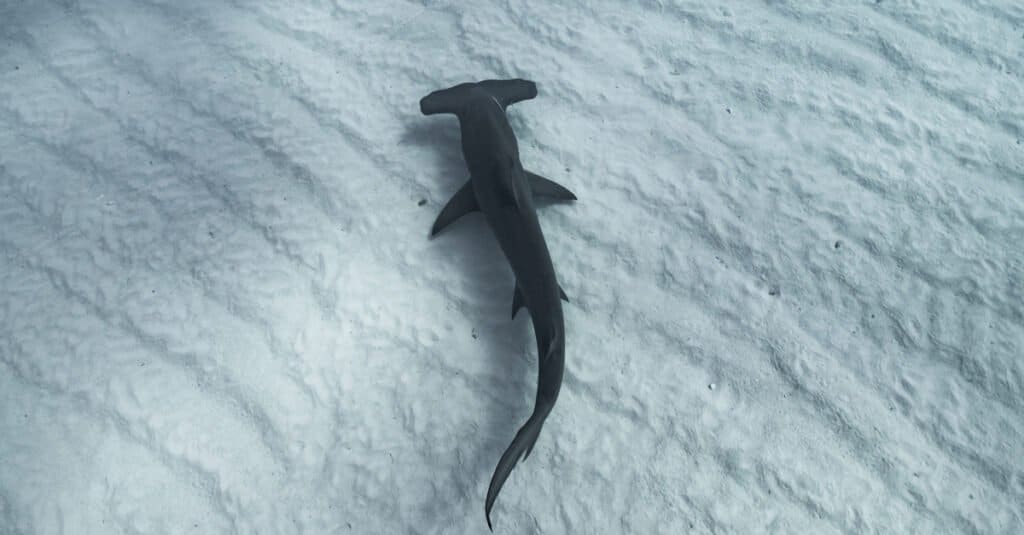
Adult hammerheads can make a meal of baby hammerheads.
©Michael_19/Shutterstock.com
This may come as a surprise, but one of the fish that eats hammerhead sharks is none other than the hammerhead itself. Adult hammerheads are not discerning when it comes to a meal; if a baby hammerhead gets too close, it risks becoming dinner for the adult.
4. Tiger Sharks
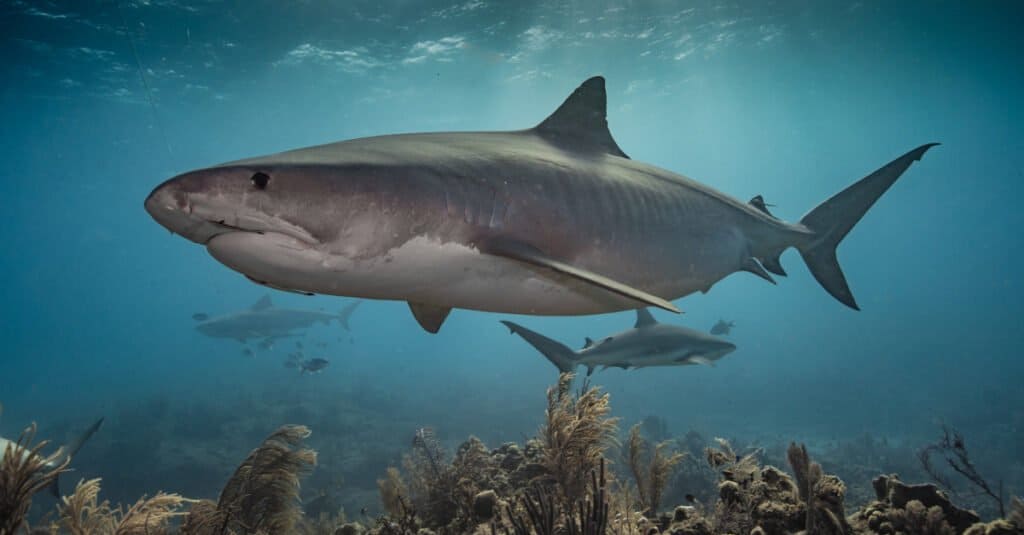
Tiger
sharks have unique teeth that are flat, serrated, and bent to one side to aid in shredding delicate fish flesh.
©iStock.com/Howard Chen
Tiger sharks, known for the tiger-like stripes on their sides and their predilection for eating garbage, will eat just about anything. They eat hammerhead sharks, seals, sea lions, sea turtles, bony fish, and rays. Adult tiger sharks don’t think twice about snacking on a baby hammerhead, or two.
3. Orca Whales

Also known as killer whales, orcas are significantly smaller than blue whales or sperm whales but larger than dolphins and porpoises.
©slowmotiongli/Shutterstock.com
Known for their spectacular tricks in aquatic amusement parks, orca whales actually live in all the world’s oceans. Orcas eat hammerhead sharks, but only on very rare occasions. Their prey more often includes seals and sea lions, as well as baby blue whales and baby humpback whales.
2. Great White Sharks
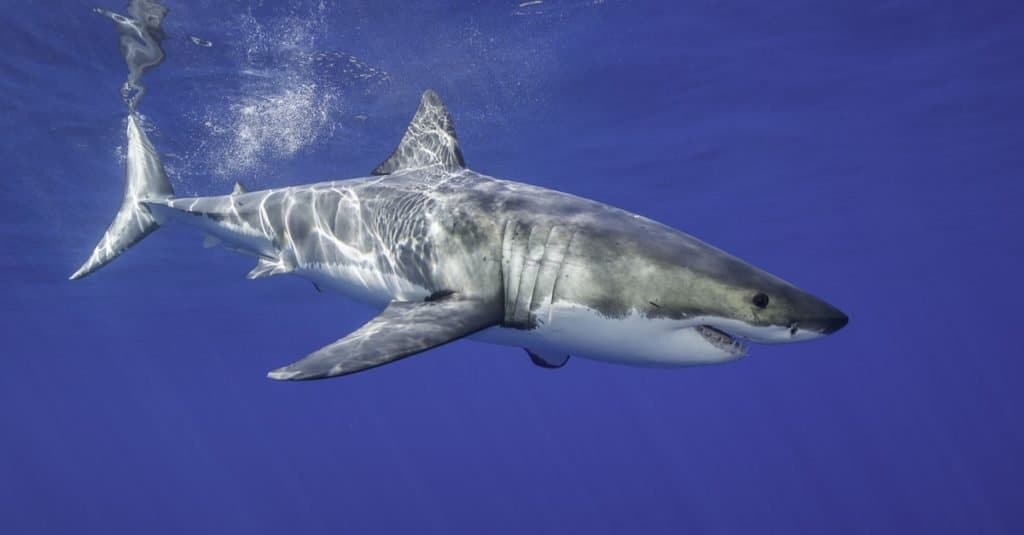
The great white shark has a reputation for being a cold-blooded killer.
©wildestanimal/Shutterstock.com
Another fish that eats hammerhead sharks is the notorious great white shark. Though great whites don’t specifically target hammerheads, they’re opportunistic hunters who won’t turn down an easy meal. This is particularly true for juvenile great whites (under nine feet long) that spend their formative years in shallow coastal waters. In those years, great whites share the same water as hammerhead sharks. So, when a baby hammerhead crosses the path of a hungry sub-adult great white, it’s likely to become lunch.
1. Humans
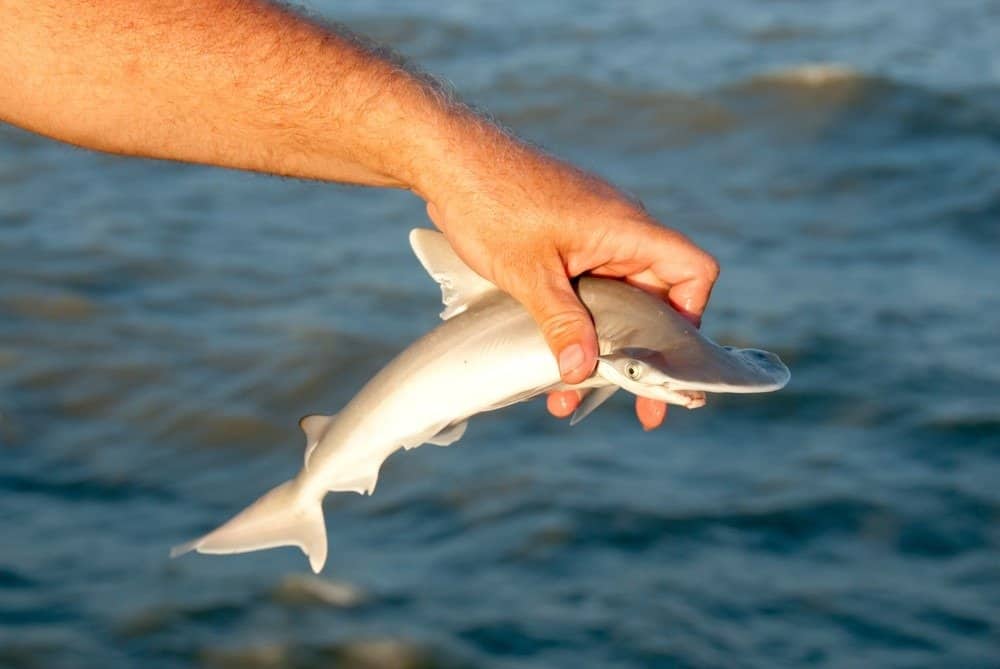
Humans are responsible for the most hammerhead deaths.
©starryvoyage/Shutterstock.com
That’s right! No animal on Earth eats hammerhead sharks more than humans do. The most common form of consumption comes from shark fin soup, a staple delicacy in many Asian countries. Unfortunately, the taste for shark fin soup, along with a few other factors, has led to a drastic decrease in hammerhead numbers worldwide.
One of the most important parts of shark conservation today is refraining from eating sharks. There are a few good reasons to avoid the flesh of these apex predators. First, shark meat tends to have a disagreeable taste. But, more than that, it tends to have very high levels of mercury, which makes it not only ecologically disastrous to eat but dangerous.
Why Hammerhead Sharks are Important
Hammerhead sharks, like all sharks, are macropredators at the top of the food chain or food web. The health of our oceanic ecosystems rests on their shoulders, or fins. That’s because hammerhead sharks are keystone species. If we want to preserve these incredible fish for future generations and for the health of our oceans, it’s important to act now. Educate yourself on sharks and shark conservation, and reduce the amount of plastics, especially single-use plastics, you use. Choose sustainable seafood options, and never eat shark meat.
The photo featured at the top of this post is © Martin Prochazkacz/Shutterstock.com
Thank you for reading! Have some feedback for us? Contact the AZ Animals editorial team.






